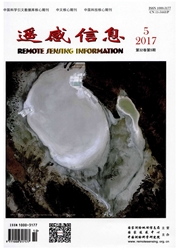

 中文摘要:
中文摘要:
沿海海水入侵区地下水氟中毒屡见不鲜,对比分析氟超标但经吸附处理、氟未超标和氟超标村庄地下水性质发现:经过简单吸附法处理高氟地下水,虽然氟处于正常阚值,但Cl-、NO3-、NO2-、TDS和总硬度等仍严重超标。处理后的地下水与氟中毒村庄地下水Ec、TDS、总硬度、Cl-、Br-、NO3-、NO2-、SO4 2-、Na+、K+、Ca2+、Mg2+、Sr2+等指标相当,表明单一吸附法仅使得地下水氟降低,但对其它离子影响较小,吸附法处理的地下水仍存在饮用风险。地球化学指标也表明,氟中毒村庄地下水受海水入侵影响显著,高氟地下水与海水入侵相伴而生。因此,在处理海水入侵区高氟地下水时,应考虑海水入侵与地下水氟富集的关系,发展特殊的综合处理技术。
 英文摘要:
英文摘要:
Fluorosis is nothing new in coastal seawater intrusion areas. Comparative analysis of groundwater characteristics between high-fluorine groundwater treated by adsorption methods, normal water, and high-fluorinegroundwater, were carried out. It is found that Cl-, NO3-, NO2-, TDS and total hardness are overproof althoughfluorine is within limits due to adsorption treatment. Groundwater properties of Ec, TDS, total hardness, Cl-,Br-, NO3-, NO2-, SO42- , Na +, K+ , Ca2+ , Mg2+ and Sr2+ after treatment are almost equal to those in fluorosisvillage. Such results indicate adsorption methods have no any influence on other ions contents but to decrease fluo- rine contents, and the water is still at risk for drinking. Meanwhile, the groundwater in fluorosis villages is charac-terized by seawater intrusion. Therefore, the relationship between high fluorine and seawater intrusion should be considered when the special comprehensive treatment technologies were developed in coastal areas.
 同期刊论文项目
同期刊论文项目
 同项目期刊论文
同项目期刊论文
 期刊信息
期刊信息
